IN LONDON, THE ART OF REBELLION AND PLEASURES OF CASUAL CHIC
By Duhin Ganju
From Victoria Beckham’s 10th-anniversary celebration, Riccardo Tisci’s Burberry debut, Christopher Kane’s “Sexual Cannibalism” to Erdem Moralioglu’s crossdressers— independent voices at London Fashion Week, catering to women of all ages, delivered the most touching (and provocative) shows of the season.
There were some echoes of a revolution in female identity this SS’19 season. And women’s history was clearly on a number of designers’ minds, whether the end product was seen via a computer, as I browsed through some of the collections that they showcased during London Fashion Week. It was also a time for celebration, whether it was Victoria Beckham showcasing her 10th anniversary collection in her homeland or whether it was Riccardo Tisci debuting for British luxury giant, Burberry. But aside from the surprise appearance of crotch-covers and “Sexual Cannibalism”-logo(ed) t-shirts at Christopher Kane, the clothes weren’t really about how to dress for the future (by “future”, I mean, the year 2019!), it was about designers designing clothes that spoke to women of all ages—whether she’s sexy, provocative, rebellious, or simply, modest and chic.
Christopher Kane has always been a disruptor of British fashion and his advocacy towards empowerment of women and girls through his clothes makes him a force to be reckoned with. If his last season’s collection was inspired by the ’70s manual, The Joys of Sex, this season, the designer looked to David Attenborough’s films on the mating behaviors of wildlife—drawing on sex and dominance. He called the show ‘Nature and Sex’ and the soundtrack for the show was a mix of Attenborough’s running commentaries on mating and Marilyn Monroe’s thoughts about being a sex symbol. It was subversive and that was Kane’s point. In that sense, exaggerated shoulders morphed into nipped-in waists and twinkling evening dresses wrapped around the models’ bodies like second skin. A triangle of macramé lace—a crotch cover—that the designer found at a sex shop in Tokyo, covered the shoulder straps of delicate sheathes and the stand-up tongues of the shoes. There was red lace midi appliquéd with crystals at the bodice, revealing a slither of flesh at the waist. It was overtly sexual but, at the same time, extremely desirable and sexual.
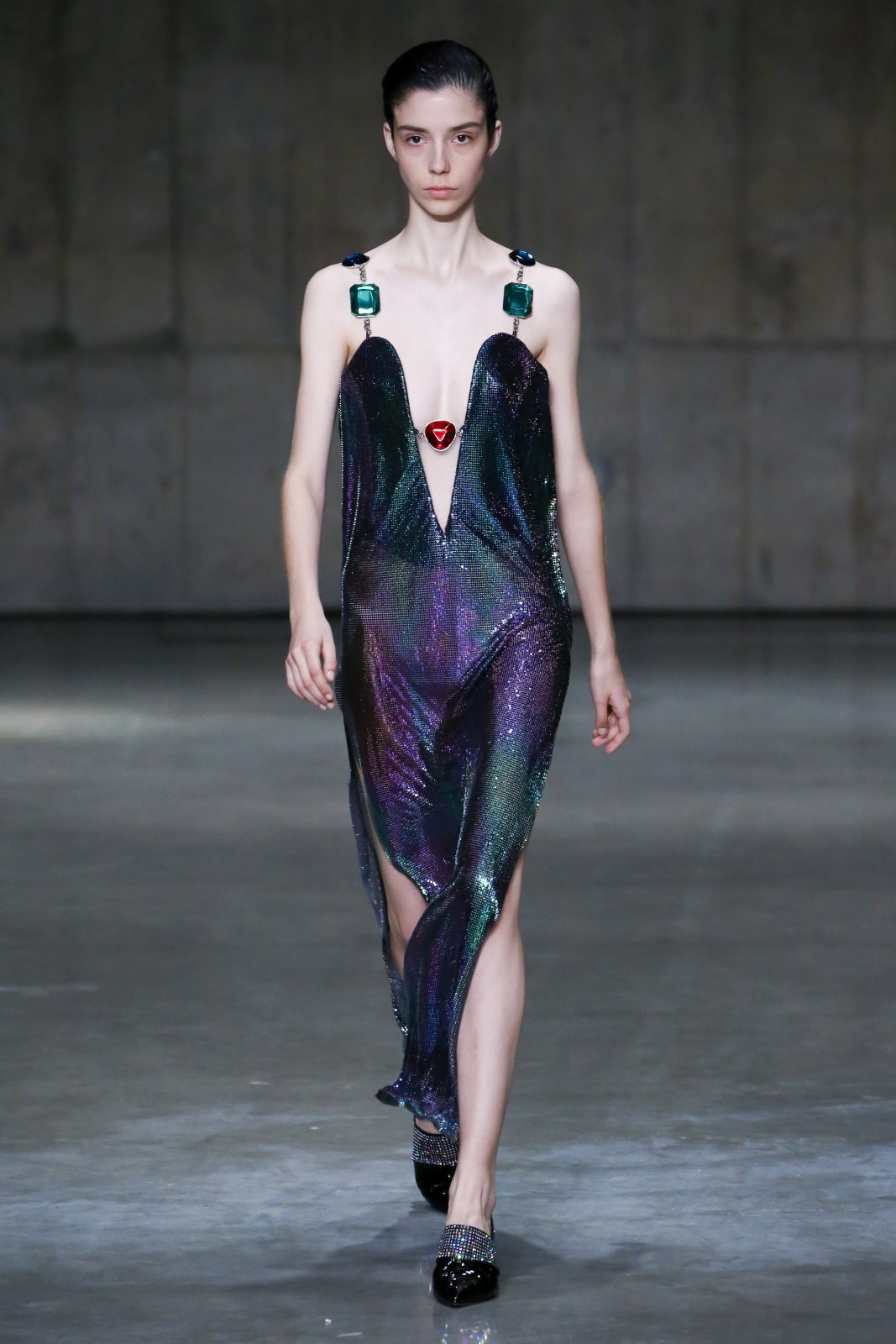 Photo Credit: Christopher Kane SS’19 Vogue Runway
Photo Credit: Christopher Kane SS’19 Vogue Runway
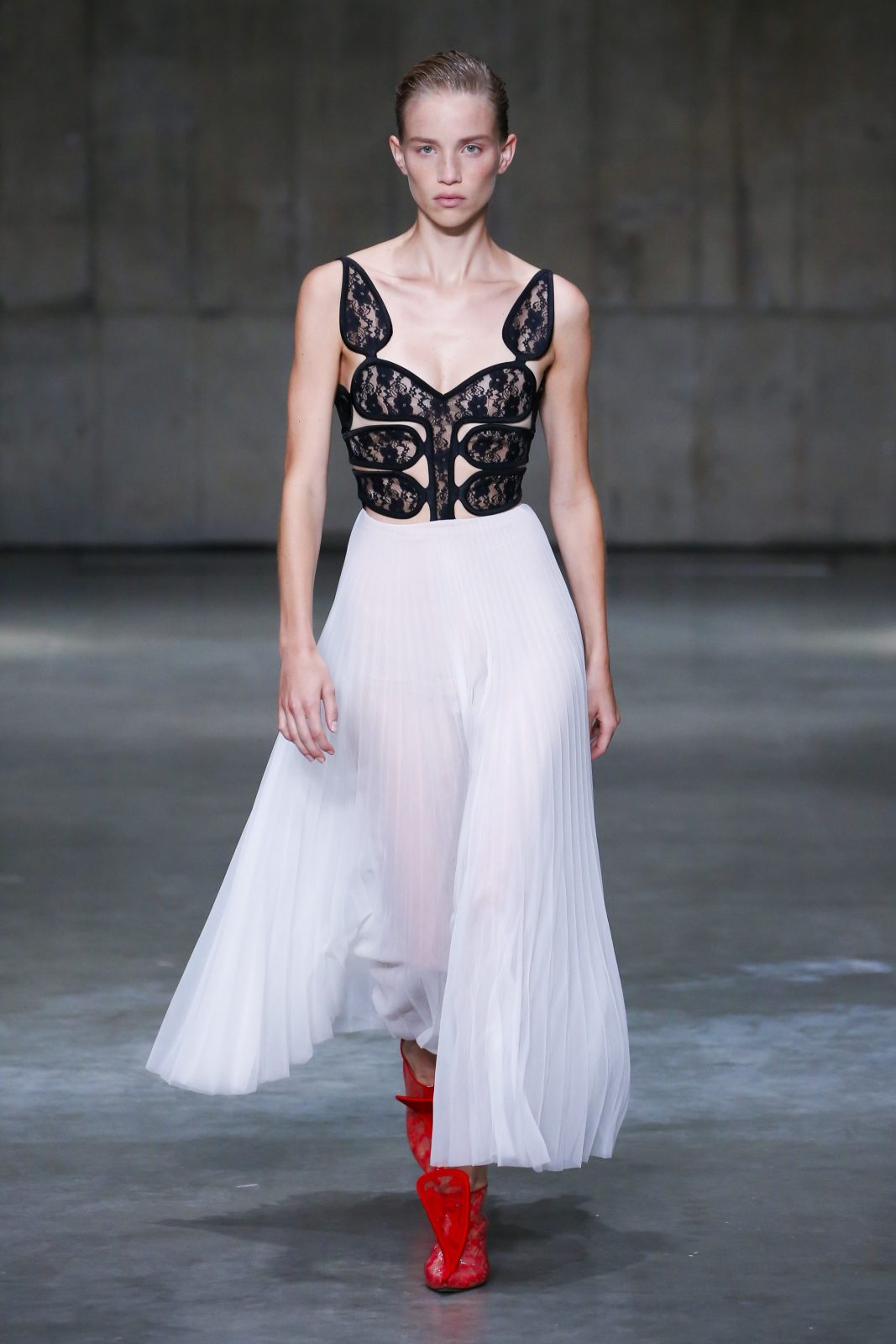 Photo Credit: Christopher Kane SS’19 Vogue Runway
Photo Credit: Christopher Kane SS’19 Vogue Runway
Erdem Moralioglu’s collection was based on cross-dressing. Thomas Ernest Boulton and Frederick William Park were two Victorian cross-dressers and suspected homosexuals, whose names Moralioglu stumbled upon, on a plaque in Bloomsbury (The designer and his partner, Philip, recently bought a house there). So, gender fluidity became a protagonist in Moralioglu’s fashion story and just like the cross-dressers who had the courage to explore the power of self-expression, he offered a credible wardrobe with clothes that spoke of the same thought. There were wonderful pantsuits in glitzy brocades, some embellished and others, with leg o’mutton sleeves. Flower prints blossomed across floor-sweeping tiered or ruched dresses and red roses trickled down the hems of a body-skimming corset. A long white coat with black buttons and velvet ribbons was reminiscent of old Saville Row tailoring that the designer has mastered artfully, going into his next decade of business. He also put two male models on the runway (I wonder, why there were only two) wearing trapeze-style coats—giving unisex dressing a whole new dimension.
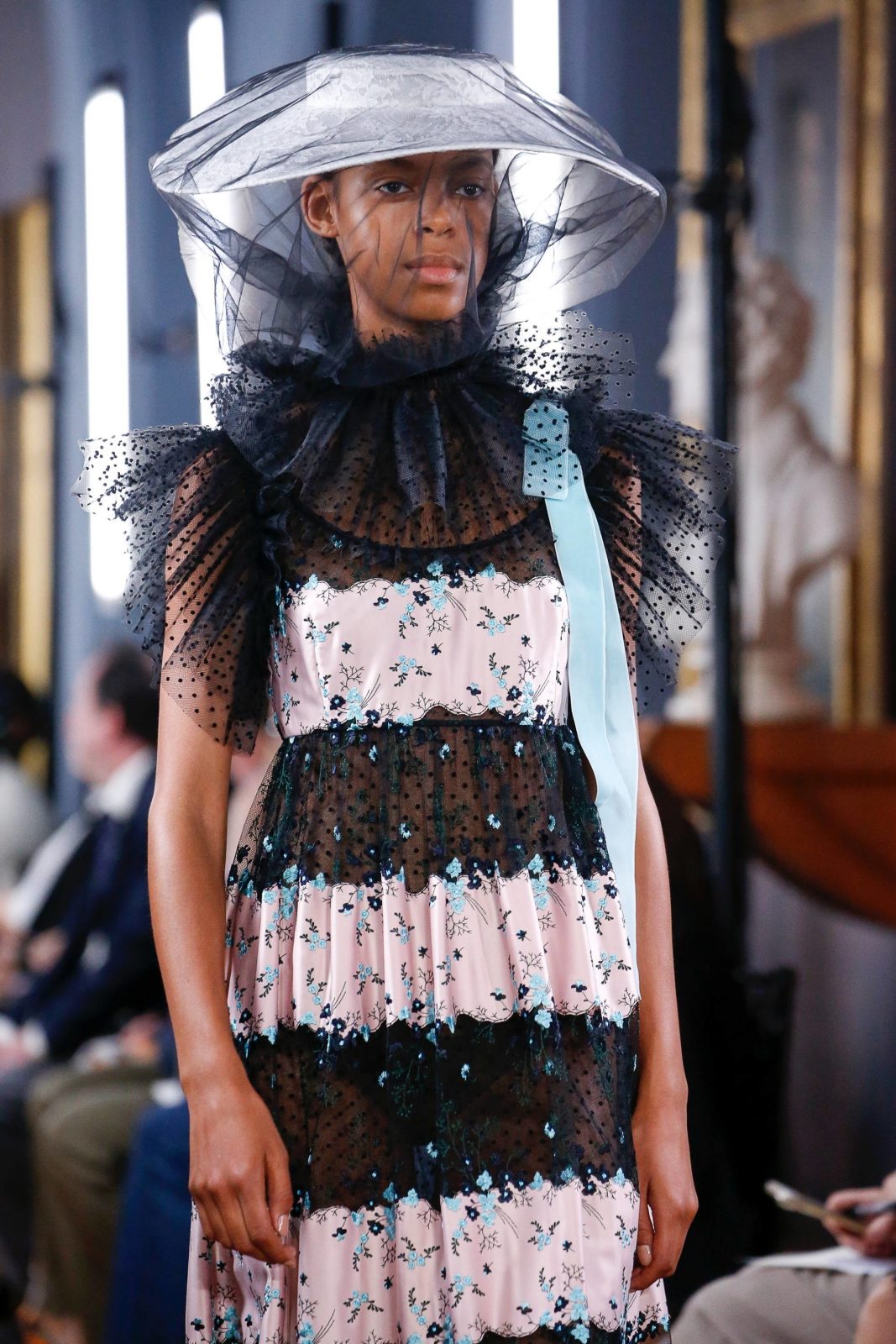 Photo Credit: Erdem Moralioglu SS’19 Vogue Runway
Photo Credit: Erdem Moralioglu SS’19 Vogue Runway
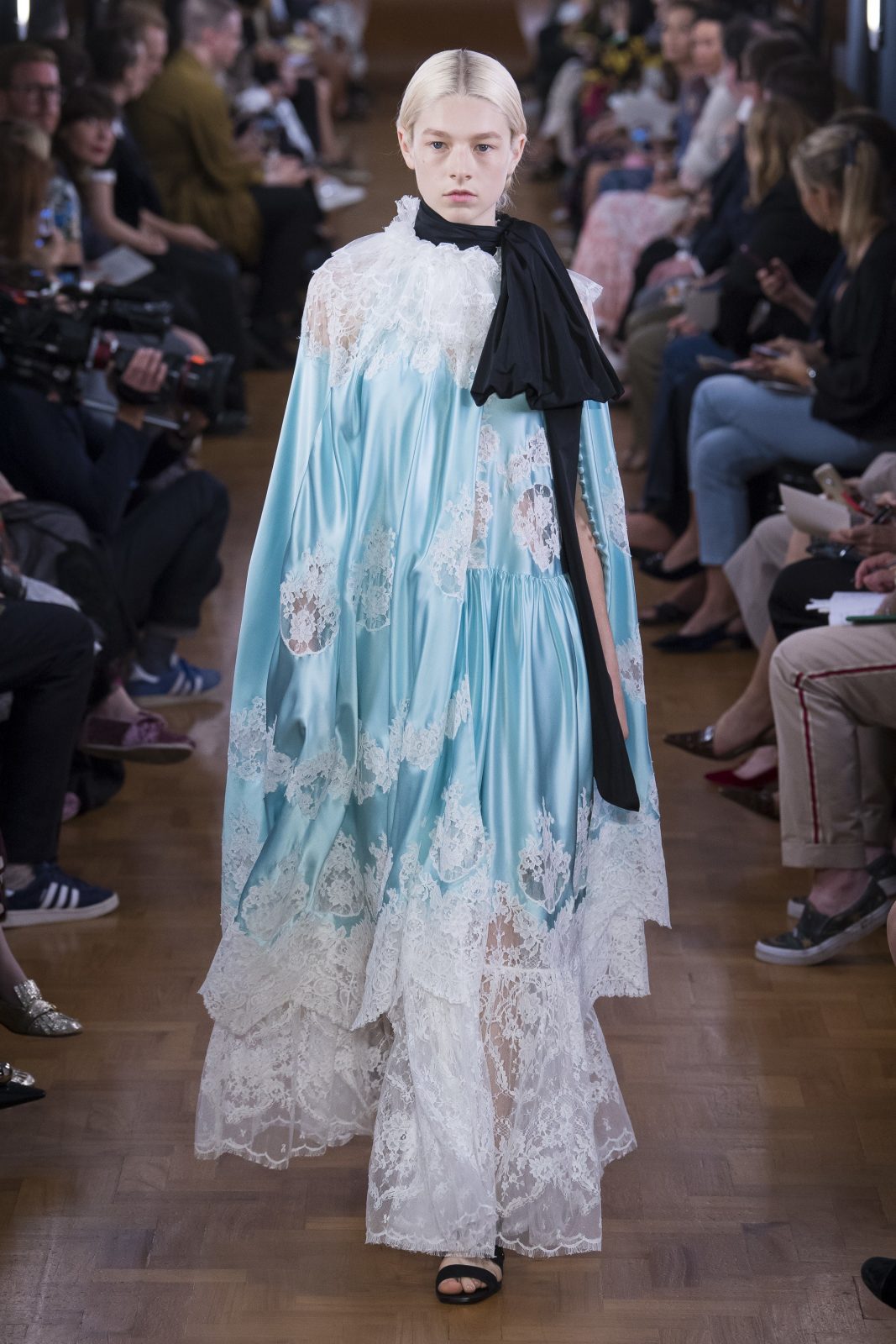 Photo Credit: Erdem Moralioglu SS’19 Vogue Runway
Photo Credit: Erdem Moralioglu SS’19 Vogue Runway
Following the codes of androgyny and female empowerment, Victoria Beckham returned to her hometown in London, debuting her 10th-anniversary collection and celebrating a decade in the fashion business. Ten years ago, when Beckham showcased her first collection of 10-something dresses—body-hugging sheaths in a seersucking jersey fabric and a signature zip running all the way down the back—at the Waldorf Hotel in New York, no one would have ever thought that the former Spice Girl-turned-designer could make it to 2018. Don’t get me wrong, those 10-something dresses did garner positive reviews. So, her SS’19 collection was a testament to how far she has come as a designer. “For me, now, it’s not about being body conscious, but rather feeling conscious of the body”, she had once said, in an interview with Tim Blanks for The Business of Fashion. That mantra applied to her collection, showcased within the unadorned walls of London’s Galerie Thaddaeus Ropac. From Stella Tennant’s pearly white power suit with slit-flared trousers, asymmetrically-cut chiffon dresses in microscopic floral prints, flimsy lace camisoles to a gold brocade suit—it was all about juxtaposing masculine codes with feminine ones. As Beckham descended down the staircase, teary-eyed, to give her husband (David) and her children (Romeo, Brooklyn, Cruz, and Harper) a kiss, the audience rose to their feet. It was an emotional moment. Poetic and sublime.
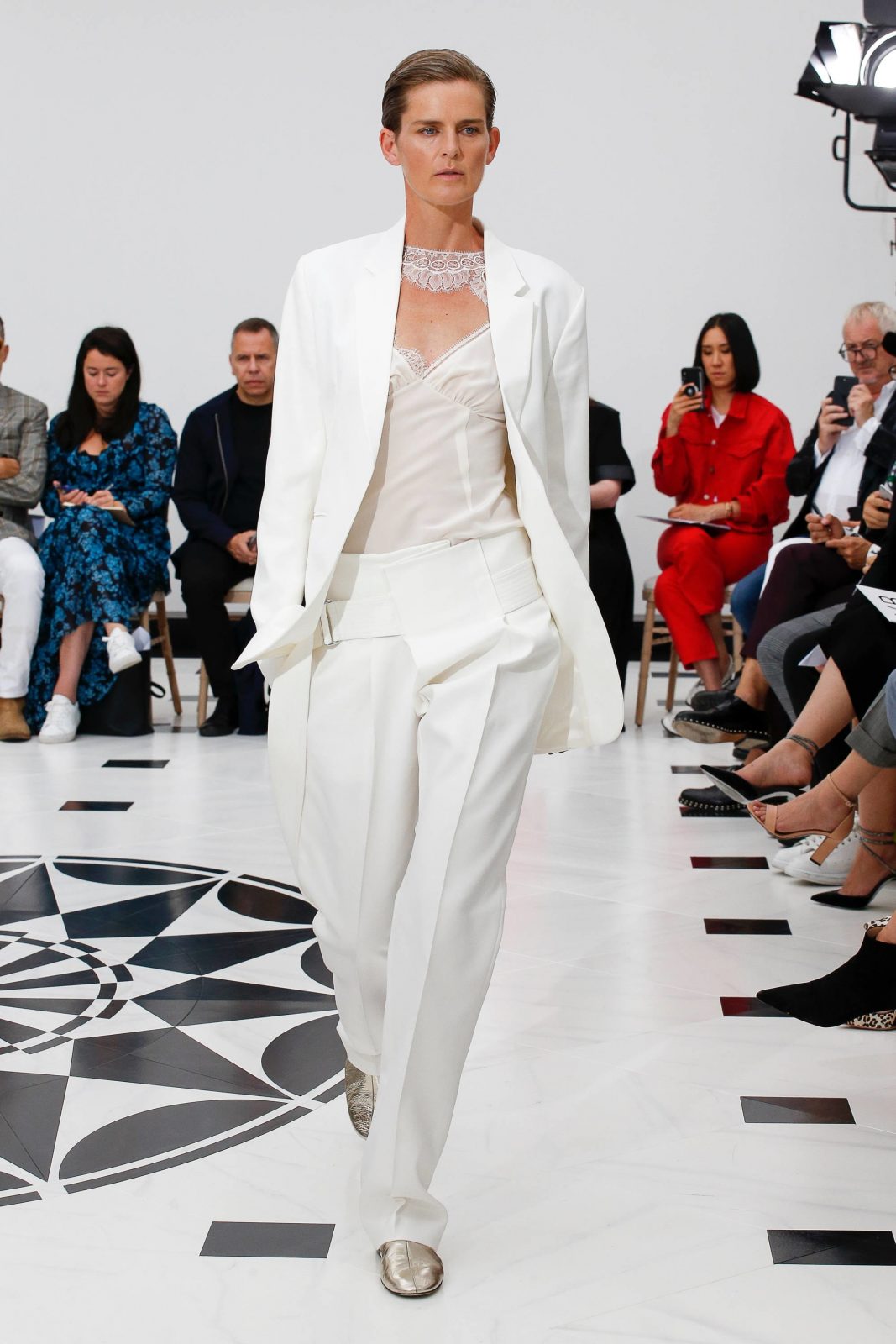 Photo Credit: Victoria Beckham SS’19 Vogue Runway
Photo Credit: Victoria Beckham SS’19 Vogue Runway
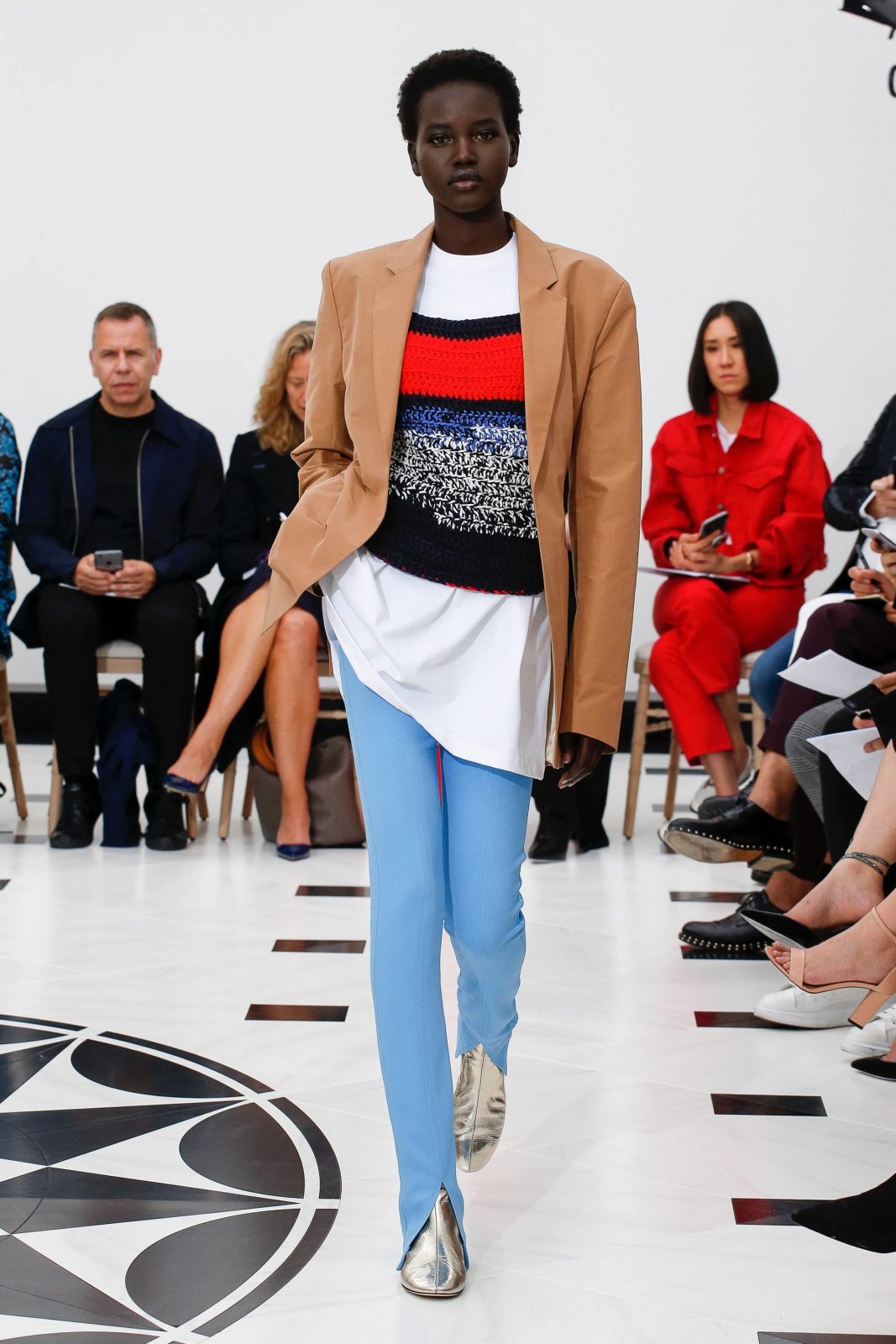 Photo Credit: Victoria Beckham SS’19 Vogue Runway
Photo Credit: Victoria Beckham SS’19 Vogue Runway
Another emotional moment was captured within the massive South London Mail Centre, as Riccardo Tisci took his bow after a strong and coherent debut for Burberry. We all know that spearheading a 162-year-old fashion house, with such a rich history, is not an easy job. Burberry, the giant of British fashion, has gone through a lot. After 17 years, when Christopher Bailey departed the house—everybody was keen to know who the next person would be to fill his shoes. It was none other than ex-Givenchy boss, Tisci. Already having done a few changes—with the logo, the packaging, the product drops, eliminating Bailey’s “see-now-buy-now” plan, and refurbishing the Regent Street flagship store—one couldn’t wait to see what Tisci would bring to the table. And, what he did bring was something refreshing (if not entirely convincing). The Burberry woman got a refined and sophisticated remake, think: featherweight trench coats, ultra- lux cardigans, squishy and pleated skirts, evening gowns, animalier livery, messenger bags, passport holders, tassels, prints, and the list goes on… There were 134-looks in total— considering the commercial agenda behind the collection—which, in my opinion, made the collection a tad chaotic.
 Photo Credit: Burberry SS’19 Vogue Runway
Photo Credit: Burberry SS’19 Vogue Runway
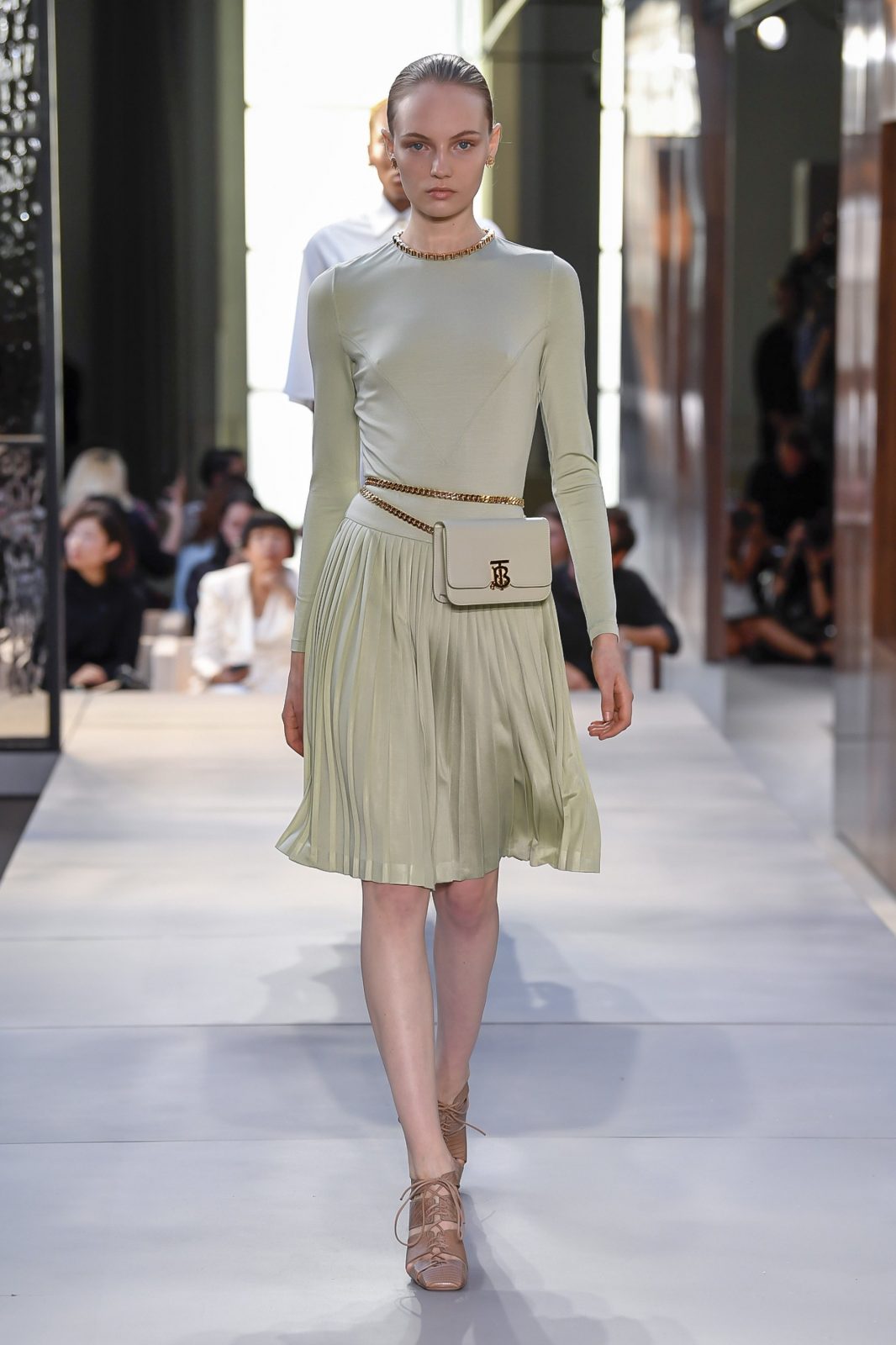 Photo Credit: Burberry SS’19 Vogue Runway
Photo Credit: Burberry SS’19 Vogue Runway
Combining his Italian heritage with the pristine Britishness of the trench- coat-maker label, Tisci somehow managed to offer something new which can be a bit tricky because, on the one hand, being too respectful is dull; but a clean sweep can confuse brand loyalists. Was it a credible collection? Personally, yes and no. Though I would have liked to see it a bit more tightly edited, it was quite the start to a hopefully optimistic journey for this new chapter in Burberry’s history. But, it definitely was better than the last time an Italian designer helmed the brand. As Vanessa Friedman of The New York Times wrote in her review, “All’s well that ends well, and so on. But it was hard not to long, amid all the chic and street restraint, for a tempest.”
Which brings me back to the conclusion: the independent voices, catering to women of all ages, proved their mettle. By reducing the elements to their essence, they gave themselves that space to wrestle with reality and in the process, delivered unfussy-yet-stately grace that had been missing elsewhere in London this season. Quietly, out of the invisible, magic was made.
Bio
Duhin Ganju is a fashion writer with experience of working for prominent International magazines—like L’Officiel, Harper’s Bazaar, and Harper’s Bazaar Bride—based in India. Four years ago, he founded his own blog – http://journeyofadreamcatcher.blogspot.com/ – dedicated to highlighting and decoding collections of designers showcasing during international and Indian fashion weeks. As a first-year student of the Master of Arts in Fashion Studies in Parsons New York, his research interests lie in the fields of fashion criticism, fashion journalism, fashion history, and sexuality and gender studies. He is also an Editorial Staff at BIAS Journal.